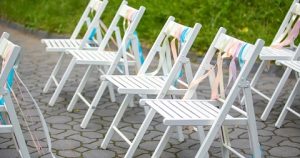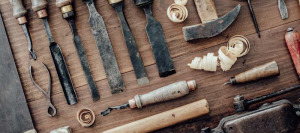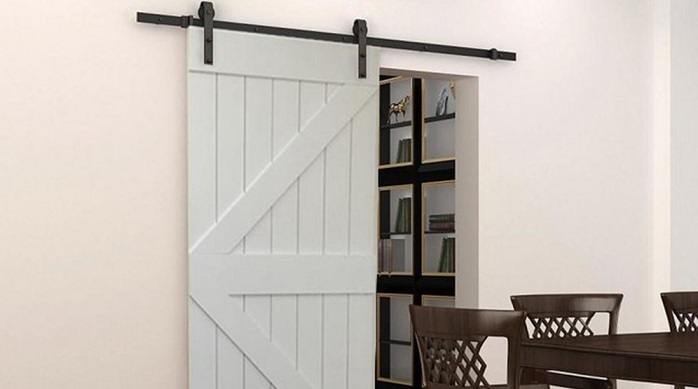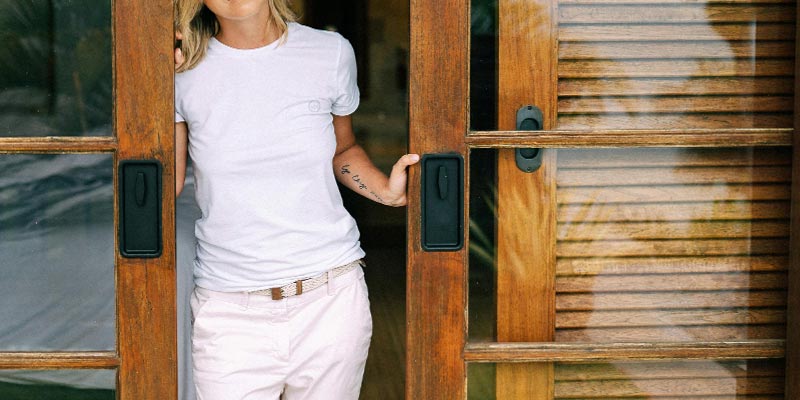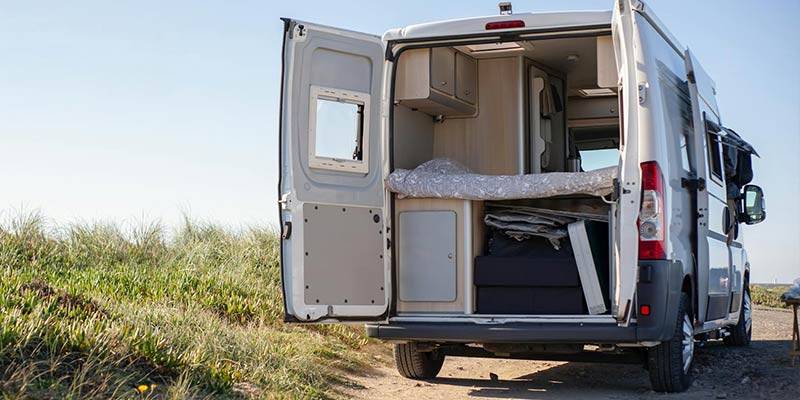
Heard of auto upholstery but unsure what it means for your car or camper? Learn what is upholstery in a car, RV or camper, so you can start your upholstery refurb project on the right foot.
Refurbishing and replacing automotive upholstery in a car, camper or RV can be a very complex undertaking for anyone. For a professional auto upholsterer, there are so many different individual parts that must be custom fabricated to ensure that the entire interior of a vehicle matches perfectly, which can become very costly.
But if you’ve picked up an older fixer-upper camper or RV, and you’re an avid DIY’er, refurbishing your own vehicle upholstery can become a really fun and addictive hobby. However, before you get started, it’s important to understand that the term ‘upholstery’ means different things in the automotive space, compared to household furnishings.
In this article, I explain what all the different ‘upholstery’ parts of a motor vehicle are, so you can start your car, camper or RV upholstery tasks with a solid understanding of what you’re working with.
So, What is Upholstery in a Car, RV or Camper Exactly?
You’ve probably heard the term auto, automotive or car upholstery. But what is upholstery in a car or camper, actually? Here, I’ll go through every part of the car interior one-by-one, that is considered “upholstery”. It’s much more than just seats, although that is the most obvious one.
What is Upholstery in a Car, RV or Camper? Automotive upholstery parts include:
- Seats including the seat cushions, head rests, seat armrests and seat storage pockets.
- Doors including the panel, door armrests, storage bins.
- Dash including the front dashboard, rear deck and center console.
- Pillars which are the various vertical sections between the windows and other parts.
- Roof comprising the roof upholstery headliner, visors, overhead consoles and RV/camper soft top (if present).
Not all of these parts will be upholstered in every car, RV or camper, since interior designs vary by model and manufacturer.
Soft Furnishings: What is Upholstery in a Car, RV & Camper?
Seats are some of the hardest parts of any automotive upholstery project. They are also the most obvious, hence why we have put them first up. The seats themselves feature very complex lines and curves, most of which are held in place by the upholstery slipcover itself.
So, aside from the seat cushions, what is upholstery in a car? Plenty, it seems, as we’ll explore now.
Car, Camper & RV Seats
Covers
When you think about what is upholstery in a car, the seat covers will naturally be the first to come to mind.
Unlike household chairs, the seats in regular cars and vans are not made of wood. As a result, the cover cannot be simply stapled to the frame. Instead, the seats are actually covered by a custom slip that is designed to fit over the curves of the seat and hold them in place. There is generally one for the seat and one for the back. Cars with headrests will have a separate cover if needed.
The seats in campers and RVs on the other hand, depending on the style you have, may more closely resemble household furniture and have a wooden frame underneath. This makes the job of replacing the upholstery significantly easier. In this case, you can follow the instructions for reupholstering a chair, adapted slightly to fit your camper frames.
Armrests
Most cars only have one armrest on each seat, on the inside of the car away from the door. If your car, van or RV comes with an armrest on the door, then generally it will also have an armrest on the seat itself, unless the car has a standard transmission. These armrests can be covered just like the rest of the seats, to match the design of the interior.
Head Rests
Not all cars have headrests, especially older vehicles. Nevertheless, if a car does have headrests, then it will need to be upholstered accordingly. Headrests can also be quite difficult to upholster, due to the unusual shape, and especially if they have speakers fitted directly into them.
Storage Pockets
Almost all seats have some form of storage built into them. Sedans have pockets on the back of all of the front seats. And, both cars and RVs may also have storage pockets on the front side of the seat. These are not always sewn into or part of the seat upholstery. For vehicles that have molded plastic units, these can be customized and covered to match the rest of the car’s interior.
Vehicle Floor
Most cars today have some sort of flooring. Although not commonly modified, some projects can include the modification of the carpet or vinyl flooring. When thinking of what is upholstery in a car, the flooring may not be an obvious one to add to the “upholstery” pile, but in the case of carpet it most certainly is.
Carpet/Vinyl
Most cars feature a carpeted floor, although vinyl is also common in RVs and Campers. In the front of the car or RV, the pressed carpeting in the footwell is molded to the shape of the floor of the car, and replacing it usually requires the complete removal of all seats and center consoles that may be in the way. In cases where vinyl is used for the flooring, much like the carpet, it was most likely molded to the shape of the floor of the car and requires similar effort to remove.
Liners
Liners, much like the original carpet or vinyl in a car, are molded to the shape of the floor of the car. These can be either purchased or fabricated from a wide variety of materials. Rather than replacing the original carpet or vinyl, many custom cars feature a custom liner instead.
Mats
Most mats can be purchased at automotive stores, and sit on top of the flooring or liner. Although these are generally made of heavy-duty rubbers and plastics, custom-made mats can also be fabricated. It’s important that a car has a mat, as the wear and tear of the heel of the foot will quickly wear way through traditional materials used for automotive flooring.
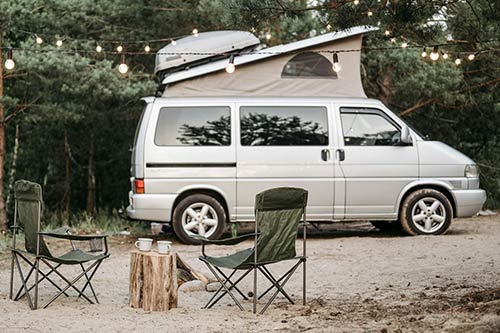
Car, Camper & RV Roof
The roof includes anything above the pillars, both inside and outside of the vehicle. While most vehicles do not have anything to upholster outside, convertibles and canvas tops are the exceptions to this rule.
Headliner
Every car has a headliner, also known as the roof upholstery. The headliner is the fabric cover on the inside of the roof of the car. Because of exposure to the elements, the headliner is also one of the first parts of the car’s upholstery to degrade and fall apart. It’s not uncommon to find, older cars with the liner sagging or ripped completely.
Overhead Console
While not all cars have an overhead console, more and more customizers are creating them for their builds. The newer cars that do have an overhead console, are generally composed of molded plastic parts that can also be easily modified. Much like any other component of the interior, the console can be covered in vinyl or fabric.
Visor
The visor is one part of the car that most people forget to think about when it comes to upholstery. Located at the top edge of the windshield, these flip-down visors help keep the sun out of the driver and passenger’s eyes in the morning and evenings. Since they are covered in fabric, naturally they can be customized to match the rest of the interior.
Soft Tops
Soft tops on campers and RVs are one of the hardest pieces to perfect. They are composed of a number of specially cut and folded pieces of high-quality exterior canvas material that must be stitched together with precision. The canvas undergoes a lot of wear and tear, so it’s important to spend a lot of time perfecting each little segment accordingly. Most soft tops have both an outer and inner shell that needs to be fabricated.
While not as popular with newer campers and RVs, many older models had canvas or vinyl hard tops. These types of vehicles feature a traditional steel roof, that is then covered by a layer of foam followed by either exterior grade canvas or vinyl. Likewise, each segment must be precisely cut and stitched together in order to fit seamlessly.
Camper and RV soft tops are complex pieces to DIY, and must be completely watertight to water penetration from rainfall and condensation. If you have the budget to do so, this is a job better left to the professionals.
Hard Surfaces: What is Upholstery in a Car, RV or Camper?
As well as the soft parts that we may automatically think of as “upholstery” such as the seats and ceiling, in automotive upholstery, the hard sections are also referred to as upholstery. With regard to the hard surfaces and moldings, what is upholstery in a car, RV or camper then? Let’s explore…
Vehicle Doors
Panel Card
The most important part of a door is the panel. In the UK, this is often referred to as the door card. This panel is composed of compressed fiber material that is designed to resist moisture retention but tends to warp over time. As a result, when restoring cars, the panels are generally replaced altogether. They can be modified to allow larger more interesting speaker configurations, and are covered in a wide variety of materials.
Armrests
Not all doors have armrests. While most cars today, have some form of armrests on the doors, older model cars did not. The armrests in newer cars are part of the molded panel, but they can also be customized just like any other part of the vehicle. In order to ensure that the car matches, the armrests can be covered in vinyl as well as leather.
Storage Bins
Storage bins and pouches are also an important part of the door panel. In newer cars, these are generally molded into the panel material. However, much like the rest of the door, these can be removed or modified to suit the need of the build.

Vehicle Dashes
Another part that may not immediately come to mind when you think what is upholstery in a car, are the dashes. However, the dashes form an integral part of the visual design of a car, and are generally used for routing wiring, gauges, venting, speakers, and more.
Dashboard
In older model cars, the dashboard generally has a metal face and a vinyl cover on top. In newer cars, the face of the dashboard is generally composed of plastic, wood, or composites while the top is covered in vinyl. Any part of the dashboard can be customized and covered in matching vinyl. It is not recommended to use fabric on the dashboard as it is harder to keep clean. Dashboard vinyl should also be textured in order to prevent glare from the sun or oncoming cars.
Console
The console is found between the passenger-side and driver-side seats of the car. In most commercially available passenger cars, the center console is usually pretty plain. However, this is one of the best places for customization in any car, which is why it is one of the first places that any enthusiasm looks at.
Rear Deck
The rear deck is generally covered in carpet and is found between the back seats of the vehicle and the rear windshield. The manufacturers generally place at least one pair of speakers on the rear deck, but modifiers tend to increase that number to two or even four sets of speakers. The rear deck can be recovered in a carpet after modification, or even covered in vinyl. Like the dashboard, the rear deck should not be covered in fabric when possible. When using vinyl, it must be textured to prevent glare from the sun or vehicles approaching from the rear.
Pillars
The pillars are the smallest yet fundamentally most important structural elements that hold the roof of the car in place. The pillars are probably the most forgotten parts when thinking of what is upholstery in a car or RV, but customizing them can have a huge visual impact.
A-Pillar
The A-Pillar is the vertical support between the front windshield and the front doors of the car. In older American cars, this is generally painted metal. However, in newer cars, the A-Pillars are generally covered by a molded plastic panel. Although not common, the A-Pillars can be customized and even covered in matching vinyl or fabric.
B-Pillar
The B-Pillar is much like the A-Pillar, in that it is a vertical support for the roof. However, in trucks, two-seater coupes, and some hatchbacks, the B-Pillar is the support between the rear windshield and the front doors. In all other cars, it is the vertical support between the front and rear doors. In 2 and 4-door cars, the B-Pillar is generally covered by a molded plastic panel, which can be customized and covered in matching vinyl or fabric.
C-Pillar
The C-Pillar is the vertical support between the rear windshield and the back doors of a 4-door car. In minivans and station wagons, it is the vertical support between the rear seat doors or slider and the rear quarter windows. Much like the B-Pillar, this vertical support is generally covered by a molded plastic panel that can be customized and covered in matching vinyl or fabric.
D-Pillar
The D-Pillar is only found on vans and station wagons and much like the C-Pillar is the final vertical support for some of the largest passenger vehicles. The D-Pillar is also covered by a molded plastic panel, that can be customized and covered in matching vinyl or fabric.
Conclusion
That’s pretty much it! You should now have a pretty clear answer to your question of what is upholstery in a car, RV or camper. As you can now see, aside from seats there are numerous parts in a car that can and are considered ‘upholstery’.
In most cases we will be working with car seats, however, if you are feeling more creative especially if you start venturing into replacing your car upholstery with custom fabrics, you may find that upholstering other sections will bring a more complete and cohesive visual design throughout your car interior. That however, is a whole art unto itself, that we don’t cover here, and a very time-consuming one.
If you’re ready to start reupholstering, check out our article on choosing an auto upholstery kit for your RV or camper for ideas to make the job easier.
Happy upholstering!
Author
-

Hey, I’m Sara, co-owner of NestKoo! I’m a graphic designer and professionally trained fine artist, with a Bachelor of Arts (Fine Art) majoring in Painting. I love being close to nature, sustainable living and bringing new life to old things. My specialty in NestKoo is DIY house painting, upholstery and furniture upcycling, where I bring my skills in fine art painting and contemporary design together into a practical home DIY context.
View all posts




